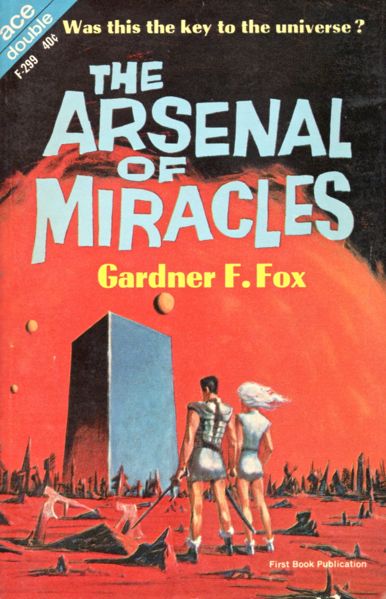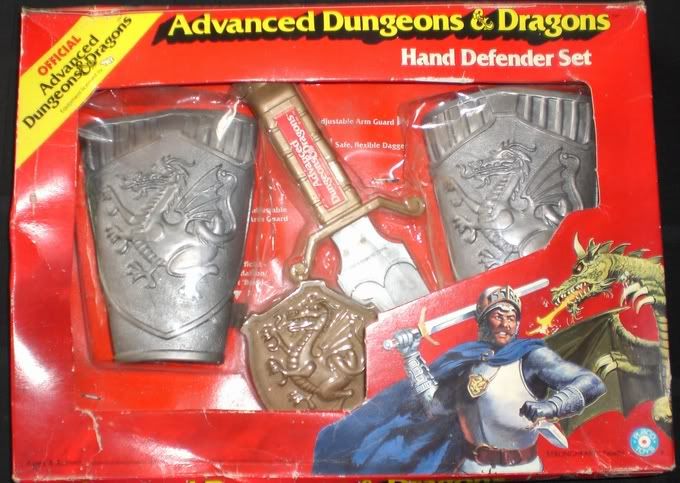
Possibly the most notorious dungeon in the history of D&D is Castle Greyhawk. Arguably, it is the history of D&D, along with Castle Blackmoor, as it is here the game was developed and honed from a collection of wargaming miniatures rules, the additions of two inspired referees, and a heaping helping of pulp fantasy tropes and artefacts. Why then, is this cornerstone of a 35-year old hobby, with millions of participants, so elusive?
Just for a moment, sit back and digest that whole "cornerstone of the hobby" concept, and its implications. In a sense, the original rules of D&D itself were developed to facilitate play in the dungeons below Castle Greyhawk. Compare that to how we develop our dungeons today based on those rules. Interesting, right?
So, obviously, its no wonder that Greyhawk has become such an object of fascination among gamers. What is a wonder is that, despite Gygax's immense body of published works, a completed Castle Greyhawk was never to be among them. In the very beginning, it was obvious that the dungeon was ever at the forefront of Gygax's mind. Anecdotes, play reports, and sketchy details were common in Gygax's earliest articles on D&D back in the mid-70's and, bafflingly, they remain our best source of knowledge on the subject to this day, along with a few reminiscences online from players in those original games.
That's not to say you can't go out and buy a book/module called "Castle Greyhawk" or some such. You can take your pick from among such (ahem) works as "Castle Greyhawk" (TSR 1988) (and it pains me to even reference that obscentity, but Torgo finds it amusing), Greyhawk Ruins (TSR 1990), or "Expedition to the Ruins of Greyhawk" (WotC 2007, released for D&D3.5 the same day 4E was announced). The one thing those books have in common is that none were written by Gygax, or from what I can tell, more than loosely inspired by the source material. Hints of the breadth of the dungeon were available in modules like "Land Beyond the Magic Mirror" and "Isle of the Ape", but were by their nature an inadequate reference point for the dungeon proper (as in, you can't "reverse engineer" the actual dungeon from what is presented in these works).
In late 2004, Troll Lord Games would seemingly come to the rescue of gamers everwhere who despaired of ever seeing the real deal in print. Gygax was finally putting the whole thing on paper in official form, albeit under the alias "Castle Zagyg", for the first time! TLG promised to make available some introductory material, Kuntz's "Castle Zagyg: Black Chateau" (an introductory module), and Gygax's "Castle Zagyg: Yggsburgh", a home town nearby the castle proper, along with some surrounding wilderness (beautifully mapped by Darlene, btw), followed shortly by the monstrous dungeons themselves "detailed in the following six volumes of this series". My group fell for it hook, line, sinker. Chateau and Yggsburg appeared on shelves as promised, and we dug in. Two groups of C&C PCs were prepared, as per Gygax's suggestion, one 1st level party to start at the Chateau before moving on to the castle, and one 4th level party to explore the lands surrounding Yggsburgh and serve as future back-up PCs when exploration of the dungeons began.
We tackled the available material furiously, wanting to be ready when the first of the six dungeon releases hit the shelves. We were in for a long wait. As the months passed, we burned through the Chateau (literally, thanks to storeroom full of oil in the basement), trampled around Yggsburgh a bit, and, as we grew to realize TLGs production schedule was based more on wishful thinking than on material, started up the "A" series of C&C modules. Increasingly bored, we put down C&C, not wanting to risk burn-out before the good stuff came out, and kept an alert eye out for release updates. Eventually, we gave up altogether, filed Castle Zagyg away in the "What If?" cabinet, and to this day bear TLG a bit of a grudge, a sour taste in the mouth, perhaps unfairly.
Today, I don't really think TLG "tricked" us into buying that introductory stuff, but the possibility was definitely discussed at our table as our disappointment in the situation deepened. For all I know, TLG was as disappointed as we were, but asses were chafed nonetheless at the advertised line of goods that was nowhere near being "in the can". Predictably, most official evidence of those six originally-planned releases has disappeared, but Greyhawk Grognard has kindly preserved the cover art and descriptions for posterity here.
What led to the demise of the product? The official line seems to lay the blame on Gary's increasingly poor health, while the rumor mill implies some sort of breakdown in relations between Gygax and Kuntz, stemming from some confusion about who did what, when. Personally, in addition to the poor health side of things, I suspect Gygax was simply not wholly enthusiastic about rehashing stuff from 30 years ago (can you blame him?). Compare the product summaries (aliases aside) from the Greyhawk Grognard link above with the short but explicit descriptions of the original Greyhawk levels here, and it seems apparent that Gary was adding in stuff that either stemmed from later development of the dungeon, or was adding wholly new material to make it personally and artisically more interesting to work on in the present.
Eventually, in 2008, the first box, "Castle Zagyg: the Upper Works", finally appeared, though its release was bittersweet. Gygax had passed, and its anyone's guess how much of that work was truly his. Jeffrey Talanian was given the task of drawing Gygax's and Kuntz's various notes and hand-drawn maps of the project into a cohesive, publishable form, and the finished work was met with mostly positive reviews (exhaustive reviews here and here). Talanian, at least, vouches for the veracity of the content, and most probably knows best. Adding insult to injury for those anticipating the release of the other five installments, with Gary's passing came the announcement that the Castle Zagyg license was being pulled from Troll Lord Games, ostensibly to allow the new company "Gygax Games" to release the products instead. "Gygax Games" is apparently a euphemism for "Limbo", as a quick glance at the company's news page reveals no updates since october of '08.
Sadly, the few printed copies of the Upper Works were snatched up long before I got around to looking for one, and no more copies are, or will be, forthcoming. Without even Talanian being involved in any possible (albeit unlikely) future releases, the integrity of those releases is bound to be even further called into doubt.
Which begs the question: Should it matter if the Dungeons of Castle Greyhawk ever appear in their entirety?
My enthusiasm to see this venerable legend in printed form has waned, and it's unlikely to ever rise again. And not just because of its rocky and seemingly cursed history of publications past, but because I'm increasingly of the opinion that Castle Greyhawk belongs precisely where it is today: in our imaginations. I'll be just fine with it remaining a topic of legends, a rumor of days gone by, a Holy Grail of old-school gaming ever-sought but never attained.
As the above picture of the ruins of Troy amply conveys, the truth of things is rarely as grand as the legends they spawn. The real spirit of Greyhawk lives every week around tables across the world, with friends sharing the game those dungeons gave birth to.




.jpg)


.jpg)












